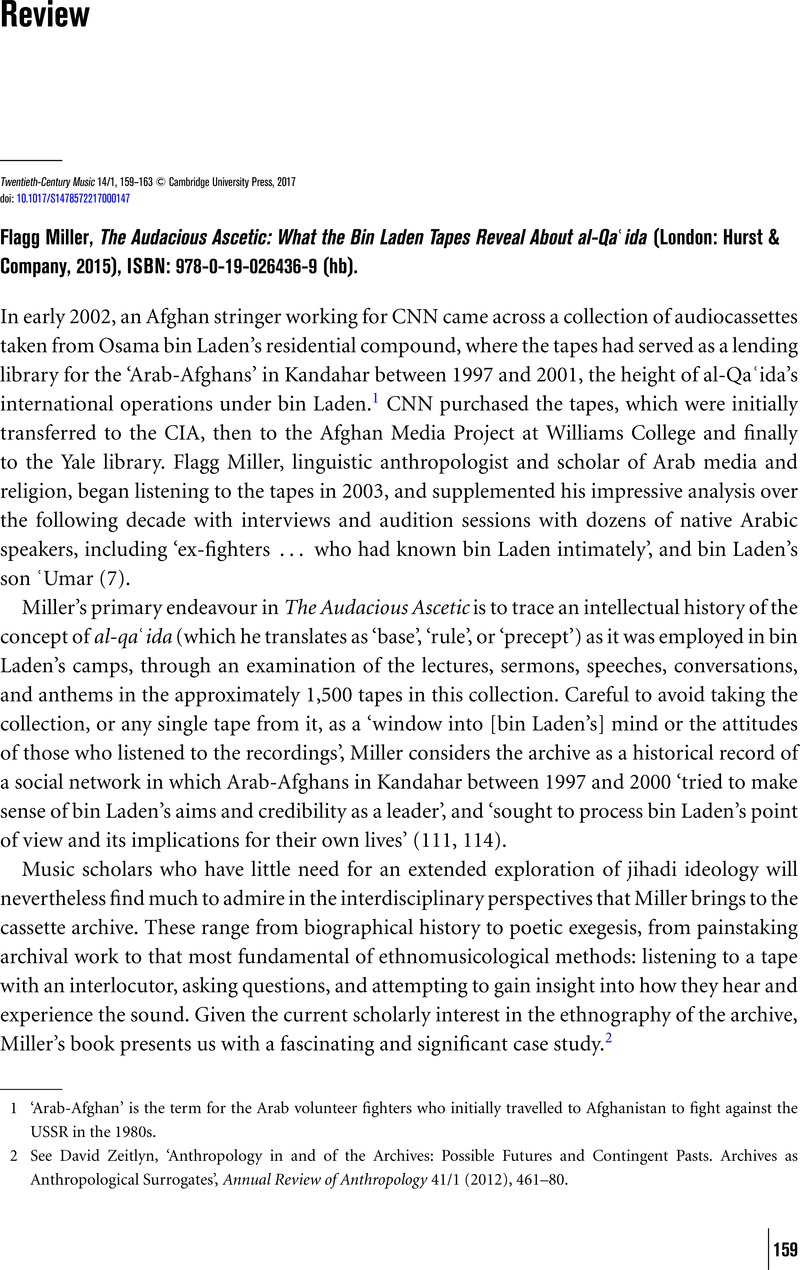No CrossRef data available.
Published online by Cambridge University Press: 10 March 2017

1 ‘Arab-Afghan’ is the term for the Arab volunteer fighters who initially travelled to Afghanistan to fight against the USSR in the 1980s.
2 See Zeitlyn, David, ‘Anthropology in and of the Archives: Possible Futures and Contingent Pasts. Archives as Anthropological Surrogates’, Annual Review of Anthropology 41/1 (2012), 461–80CrossRefGoogle Scholar.
3 See, for example: Coll, Steve, The Bin Ladens: An Arabian Family in the American Century (New York: Penguin Press, 2008)Google Scholar; Scheuer, Michael, Osama Bin Laden (New York: Oxford University Press, 2011)CrossRefGoogle Scholar; Bergen, Peter L., The Osama Bin Laden I Know: An Oral History of Al-Qaeda's Leader (New York: Free Press, 2006)Google Scholar; Bin Laden, Najwa, Growing up Bin Laden: Osama's Wife and Son Take Us inside Their Secret World (New York: St Martin's Press, 2009)Google Scholar; and Wright, Lawrence, The Looming Tower: Al Qaeda and the Road to 9/11 (New York: Knopf, 2006)Google Scholar.
4 While both of these terms refer to the same geographic area, the latter is the preferred language employed when invoking Saudi Arabia as a symbol of Muslim patrimony. In bin Laden's usage it is also a symbol redolent of specifically Arab historical pride, potentially sidestepping associations with the state.
5 The first unambiguous use of the word as a name for bin Laden's group that Miller identifies in the audio archive is from October 2000. He translates previous uses of the word in organizational documents such as the 1988 ‘Al-Qaʿida Charter’ as referring to specific bases such as the al-Faruq camp in Afghanistan, or to more abstract rules or precepts.
6 Miller, Flagg, The Moral Resonance of Arab Media: Audiocassette Poetry and Culture in Yemen (Cambridge, MA: Harvard University Press, 2007)Google Scholar.
7 Miller, The Moral Resonance of Arab Media, 35.
8 Hirschkind, Charles, The Ethical Soundscape: Cassette Sermons and Islamic Counterpublics (New York: Columbia University Press, 2006)Google Scholar.
9 Miller, Flagg, review of The Ethical Soundscape: Cassette Sermons and Islamic Counterpublics (2006) by Charles Hirschkind, Contemporary Islam 3/3 (2009), 295 CrossRefGoogle Scholar.
10 Miller, Flagg, ‘Of Songs and Signs: Audiocassette Poetry, Moral Character, and the Culture of Circulation in Yemen’, American Ethnologist 32/1 (2005), 82–99 CrossRefGoogle Scholar.